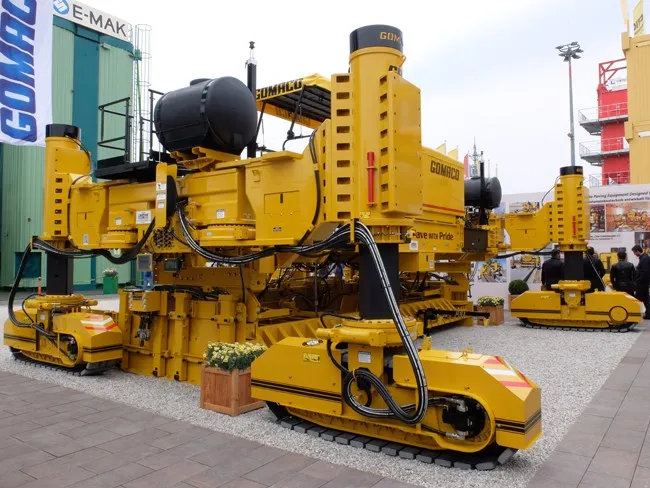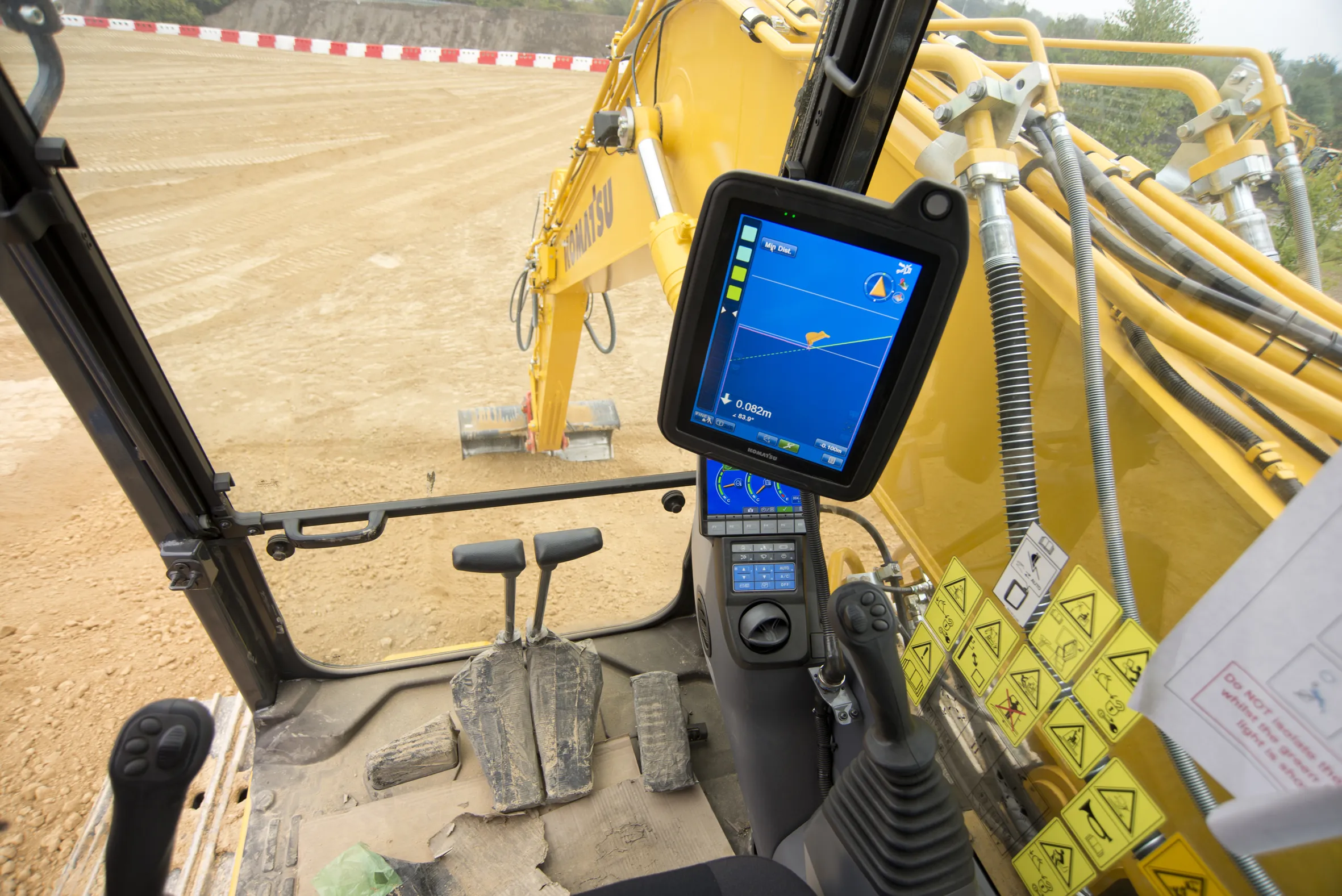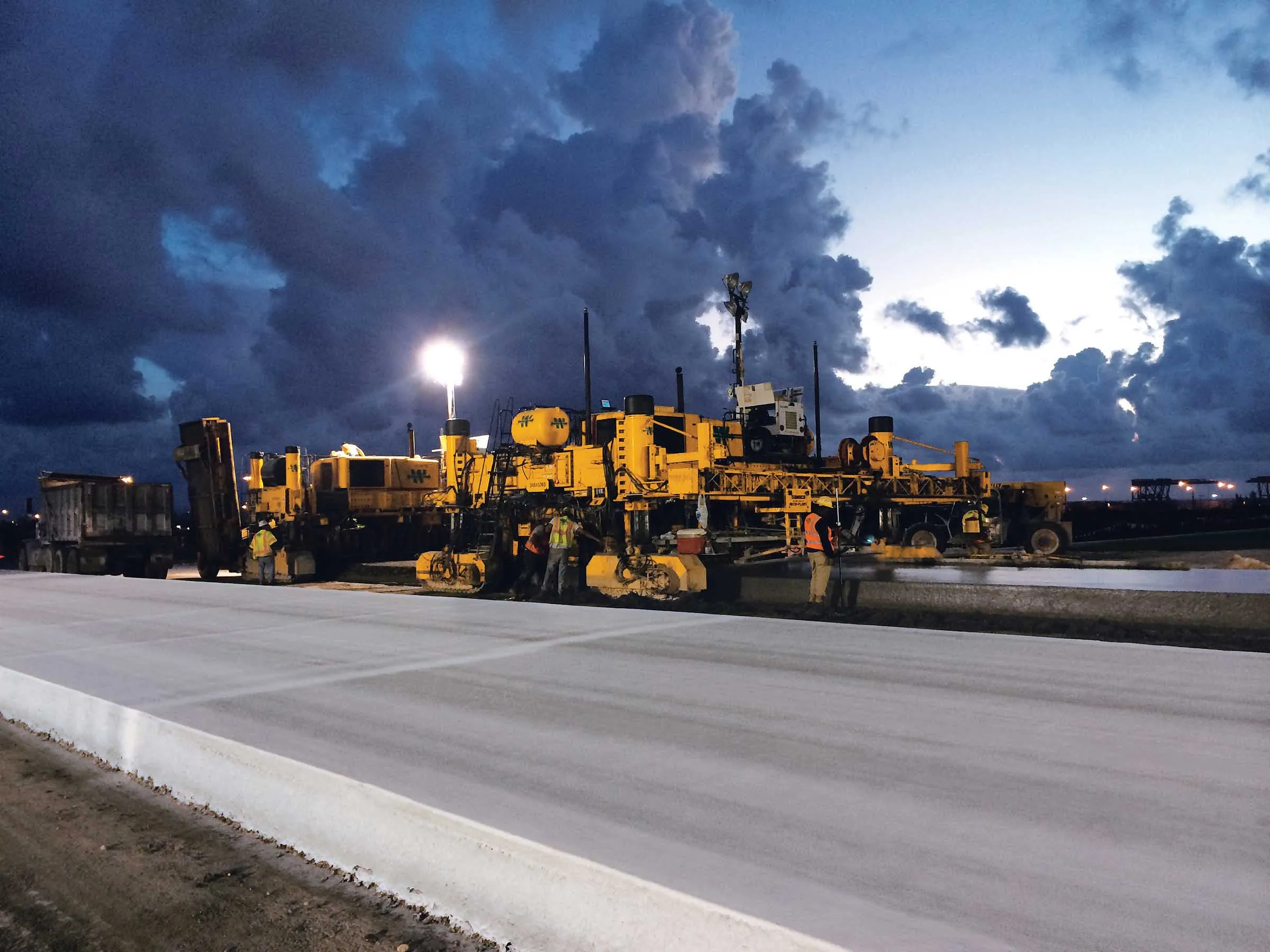In the US state of Oklahoma, Silver Star Construction has adopted 3D technology for site modelling and stringless machine control
The company, based in the town of Moore, recently used a Topcon Millimeter GPS system mounted on one of their Power Curber 5700-Cs to put down nearly 5,500m of curb and gutter in a residential housing addition in south-west Oklahoma City.
Once the dirt work and grading was completed, the concrete crew got to work by mounting the Topcon receivers on their 5700-C. The Topcon
January 19, 2016
Read time: 2 mins

In the US state of Oklahoma, Silver Star Construction has adopted 3D technology for site modelling and stringless machine control
The company, based in the town of Moore, recently used a342 Topcon Millimeter GPS system mounted on one of their Power Curber 5700-Cs to put down nearly 5,500m of curb and gutter in a residential housing addition in south-west Oklahoma City.
Once the dirt work and grading was completed, the concrete crew got to work by mounting the Topcon receivers on their 5700-C. The Topcon unit received the signal from the laser transmitter and set up the Topcon rover to check the vertical and horizontal position of the curb.
With a good concrete mix and steady delivery, the Silver Star crew was able to pour about 1,220m of curb and gutter per day without having to set and remove any stringline.
“It’s very hard for a crew that has set stringline their whole life to watch the machine just take off and follow the 3D guidance,” said Louis Cossey of Silver Star. “For a few times at first we set some stakes just to make ourselves feel better because it’s always been on grade. The advantages of stringless are overwhelming, such as cutting labour costs in half.”
Silver Star does their own 3D modelling to ensure that the model is in correct vertical and horizontal alignment for pouring curb.
“It’s a very basic system once you understand it. Anyone can learn it; it just takes a little time,” said Cossey. “3D is the future and we have several systems. If you’re going to compete in the construction world today, you need a control system. GPS is here to stay and it is constantly changing for the better.”
Over the past 30 years from its founding by one man and a dump truck, Silver Star has accumulated more than 400 machines, including graders and asphalt equipment, dozers, excavators, pavers and slipform machines.
The company, based in the town of Moore, recently used a
Once the dirt work and grading was completed, the concrete crew got to work by mounting the Topcon receivers on their 5700-C. The Topcon unit received the signal from the laser transmitter and set up the Topcon rover to check the vertical and horizontal position of the curb.
With a good concrete mix and steady delivery, the Silver Star crew was able to pour about 1,220m of curb and gutter per day without having to set and remove any stringline.
“It’s very hard for a crew that has set stringline their whole life to watch the machine just take off and follow the 3D guidance,” said Louis Cossey of Silver Star. “For a few times at first we set some stakes just to make ourselves feel better because it’s always been on grade. The advantages of stringless are overwhelming, such as cutting labour costs in half.”
Silver Star does their own 3D modelling to ensure that the model is in correct vertical and horizontal alignment for pouring curb.
“It’s a very basic system once you understand it. Anyone can learn it; it just takes a little time,” said Cossey. “3D is the future and we have several systems. If you’re going to compete in the construction world today, you need a control system. GPS is here to stay and it is constantly changing for the better.”
Over the past 30 years from its founding by one man and a dump truck, Silver Star has accumulated more than 400 machines, including graders and asphalt equipment, dozers, excavators, pavers and slipform machines.









